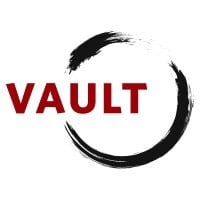The past few years have seen dramatic economic and insurance shifts. Excess & surplus (E&S) insurance grew in market share as a result, growing in the double-digits in some states. S&P Global reported earlier that E&S premiums increased 27.6% in the US, compared with total market premium growth of 8.4% in the first half of 2022. Why is E&S growing so fast? Because the world is getting riskier, as we talked about in our 2023 Industry Trends report.
States such as California and Florida are seeing large insurers exit, leaving a vacuum in available coverage. Climate change is driving an increase in hard-to-place risks. Inflation and supply chain issues still linger, raising premiums and reconstruction costs.
Because these challenges are only growing, E&S is being looked at in a new light for its flexibility and custom coverage.
Featured Resource:
The Future of E&S in a Changing World
The world is getting riskier, and insurance is changing faster than ever. Excess and surplus (E&S) is becoming a key tool to respond to these changes. Read our insights into the future of the market:
Why the Shift to E&S?
E&S insurance was once thought to be a last-resort option. But now, it is a tool through a hard market.
Excess and surplus lines insurance, or custom insurance, is a specialty market that allows insurers to address difficult or complex risks. This often includes high-net-worth homes with luxury features and higher quality materials that need more thought to insure.
E&S regulation is different than the traditional, admitted market. It allows for more flexibility in coverage and pricing. The ability to customize a policy to fit the risk and customer allows insurers to address the market challenges and still provide solutions.
Learn More: E&S Insurance Myths: Are Excess & Surplus Lines Better for High-Net-Worth Clients?
Admitted Market Rate Struggles
Personal lines insurance is facing difficulties getting adequate rate for risks in the admitted market. Claims are getting costlier, certain areas of the country are seeing increased risks, and homes are valued much higher than years ago. But the insurance rate-approval process has been slow to adapt, making it harder to get coverage.
The rapid economic changes brought on by the pandemic in 2020 have continued to affect the insurance industry. The state bases the rate-approval process on trends over decades, but the current market has seen extreme economic fluctuations over a short period of time.
For example, more areas are experiencing wildfire exposure than ever before. But some states, such as California, require admitted policies to have wildfire coverage. Insurers cannot non-renew due to catastrophic risks. With the level of wildfire exposure so extreme, insurers have been fleeing the California market because of the inability to get adequate rate for the risk.
This affects high-value home insurance even more because the admitted rates are regulated for the mass market. This means admitted rates and coverage are often not suitable for high-value homes.
This is where custom insurance and E&S coverage can provide a solution. E&S allows insurers to offer tailored coverage and flexible pricing to customers. It also allows for speed to market, meaning a policy can be updated to adapt to rapid changes, such as skyrocketing home values or inflation.
Insurance Crisis
This inability to adapt in the admitted market has caused an insurance crisis. Carriers who only write admitted policies are unable to handle high-net-worth homes and E&S policies. Many have seen record losses as they try to shift their underwriting strategies and are pulling out of high-risk markets.
Those still insuring these areas have limited their capacity, sharply increased premiums, and cut costs. California and Florida have seen the biggest impacts of the insurance crisis, but so have Louisiana, Colorado, New York, and Texas.
With climate change impacts and older homes not designed to withstand new weather patterns, more homes are being deemed “uninsurable” in the admitted market. The cost of disasters is only increasing and happening more often. From wildfires on Maui to five inches of rain falling in 90 minutes in Pennsylvania, major catastrophic events and stormy weather are causing these risks.
And they can happen anywhere.
High-net-worth individuals and families often live in communities together in luxurious coastal or mountain homes, raising risk and exposure for the customer and insurer alike. They also tend to have second homes in similar areas where they need vacation home insurance as well, making it harder to insure under one policy.
As a result, more insurers are switching to E&S to provide increased capacity to write these homes. Besides moving to custom insurance and flexible coverage, insurers are increasingly implementing risk management insurance solutions.
Greater emphasis on customer risk education and mitigation is being utilized to help customers learn to protect their assets in the event of disasters.
A Changing Economy and Growing Market Segment
With the steep hike in inflation and supply chain issues came high housing demand, driving up home values and prices. As a result, the percentage of homes valued over $1M doubled since 2010. 1 in 5 homes are worth $1M or more in 13 coastal cities.
Los Angeles, CA, and Austin, TX, saw the greatest increases in ultra-luxury homes since 2021. But most of the cities with the highest share of affluent homes are located in states facing an insurance crisis.
The changing economy and increase in high-value homes in difficult-to-insure states drive the shift to E&S.
Florida has a high share of million-dollar homes in Miami, Fort Lauderdale, West Palm Beach, and along the coast. It has now overtaken California as the largest surplus lines market in the US, with a 49% increase from June to July of 2023.
Hawaii, Louisiana, Texas, South Carolina, and Colorado are also moving toward surplus lines.
Missed Opportunities for High-Net-Worth Customers
Despite the market changes and benefits, many agents are still hesitant to do E&S business. This can lead to missed opportunities for their affluent customers looking for coverage tailored to their needs.
A lot of this hesitation stems from persistent misconceptions about the custom, innovative insurance that E&S provides. But as the E&S market grows, agents who learn and grow with it will thrive and potentially find better solutions for their customers.
E&S Market Regulation
One of the greatest myths about E&S is that it is unregulated, which is not true. Admitted insurance policy forms and rates are filed with and approved by the state. As a result, the state will take on claims through its state guaranty association or fund if the insurer were to fail.
E&S lines do not have to file their rates with the insured’s state but are still regulated.
The company’s domiciled state and the Surplus Lines Stamping Office regulate E&S. A specialty agent, licensed outside the state of the insured, writes the policy to meet the requirements to underwrite. The insured’s agent must also prove that they were denied insurance from the admitted market.
This can seem complicated. But with the right underwriting system and a carrier who specializes in custom insurance, such as Vault, it can become an easy process.
State-Backed Guaranty Fund
Admitted policies, because the state approves and regulates them, are backed by the state guaranty fund. In the event the insurer fails, the state steps in to pay out for claims from this fund. This is the main benefit and argument in favor of admitted policies.
But the guaranty fund often has net worth limits and payout caps for claims. When working with high-net-worth customers, they often do not qualify to receive coverage from the guaranty fund.
Both Colorado and South Carolina, two states increasingly more catastrophe-prone, have a maximum claim payout of $300,000 and a net worth limitation of $10M.
This means if a customer’s net worth is over $10M, they will receive no benefits from the state if their insurer fails. If the customer falls below that limit, but their house is valued at $2M, they will only receive $300,000 toward their home reconstruction or replacement.
In this case, the guaranty fund may be a non-factor, and a custom policy may be more beneficial to the customer.
Tool for Success
E&S is a tool to provide affluent customers with a solution when the admitted market has not provided a viable option. The coverage is more flexible and tailored to the policyholder's specific needs and for higher-risk and unique situations. And insurers can react much faster to market changes to provide policies that meet the needs of high-net-worth customers.
It also allows for more consideration in underwriting. As climate change impacts homes, a custom policy can assess the viability of individual aspects. Tile and shingle roofs were once thought to have a 30-year life span in Florida. But strong storms, manufacturing quality, and increased sun damage have proven otherwise.
In the admitted market, a roof like this may lead to a policy denial. But an E&S underwriter can look at the longevity of these risks and tailor a policy to them, and the insurer can recommend risk mitigation strategies.
It also allows the insurer to be more flexible on deductibles, coverage, pricing, and even self-insuring to a certain limit. This can help turn a hard “no” in the admitted market into a “yes” in a custom E&S market.
The Future of Insurance with E&S
Excess and surplus insurance is projected to continue its strong growth for the foreseeable future. Facing a hard market, agents who shift their perspective and capitalize on the opportunities with custom insurance can provide more solutions to their high-net-worth customers and thrive.
We at Vault have made E&S our specialty, hiring experts in custom insurance and creating an underwriting system that allows agents and underwriters to communicate with ease. We have simplified the E&S process to help our partners excel and grow with us in this difficult market.
We continue to prioritize custom solutions and strong partnerships. We believe reducing risks and offering superior coverage comes from data-driven technology, strategic underwriting, customer education, and expert risk analysis to build stability and growth for the future.
At Vault, we know risk education and mitigation are key to reducing the severity of loss. Protecting your assets is more than insuring them, it’s looking at the bigger picture to reduce all possible risks. We provide all-encompassing risk management services to help proactively safeguard the life you’ve built – that’s the Vault difference.
Request a quote and experience the Vault difference.
Related Products: Vault Custom
Featured Resource:
The Future of E&S in a Changing World
The world is getting riskier, and insurance is changing faster than ever. Excess and surplus (E&S) is becoming a key tool to respond to these changes. Read our insights into the future of the market:
While Vault believes the information provided in this article to be accurate, we do not warrant the accuracy or reliability of the information provided. Vault is not responsible for, and does not adopt, endorse or approve any third-party webpages, or their content, that may be hyperlinked from this page. Nothing on this page alters any terms or conditions of an insurance policy and is not intended to be taken as legal, medical, or other professional advice.

